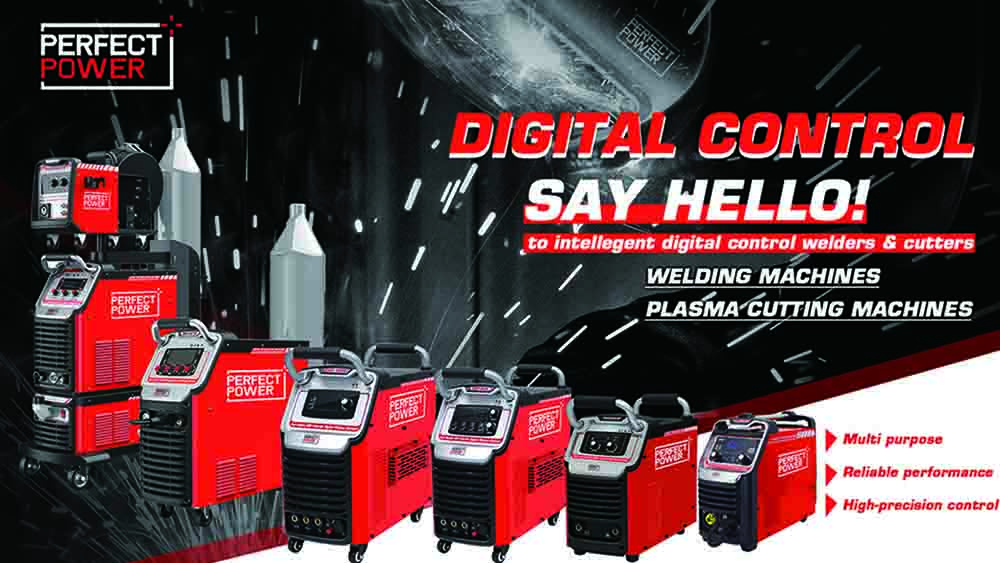If you’re new to welding, the wide array of welding machines on the market can seem mind-blowing initially. Like Ford, Toyota, and Mercedes in the auto world, there are several major welding equipment manufacturers. The big boys are Lincoln, Miller, Hobart (now owned by Miller), and ESAB.
Just as automakers produce sedans, pickups, sports cars, and SUVs, there are different “models” of welding machines, each designed for specific purposes and users. Choosing the right one doesn’t have to be hard. The information below can guide you through the process.
The most common welders are metal inert gas (MIG), tungsten inert gas (TIG), shielded metal arc (“stick”), and oxy-acetylene (“gas” or “oxyfuel”). There are also versatile, pricier multi-process machines that can handle more than one welding process. Engine-driven welders operate off the grid too.
For this introduction, we’ll focus on basic MIG, TIG, and stick welders. Understanding the core processes is crucial for aspiring welders. Your employment prospects dramatically increase if you grasp the features and benefits of various welding equipment types.
Step 1: Determine The Metals You’ll Be Welding
Carbon Steel
Most welds involve carbon steel pipe or sheet metal. Carbon steel withstands lots of heat, so it’s forgiving for novices applying too much heat.
Most processes suit carbon steel, and the machines don’t need many features for good-looking welds.
Stainless Steel
Stainless steel is trickier with heat due to its chromium and nickel alloy composition. Workers typically use MIG or TIG weld stainless steel since it requires less current than carbon steel.
The weld difficulty necessitates a decent-control machine for an optimal arc and puddle. Stick electrodes for stainless exist too, but base metal thickness and extra spatter are considerations.
Aluminum
For welders, aluminum is alien. As a non-ferrous metal with extreme heat conductivity, you constantly need more aluminum to keep the puddle molten while preventing warpage from excess heat.
MIG welders with spool guns and TIG welders with AC, inverter-based electronics, square wave tech, balance control, and pulse capabilities can handle aluminum. But these features increase machine costs significantly.
Stick welding thick aluminum is possible but not preferred.
Step 2: Determine A Current Range For All Metal Thicknesses
Thicker metals require more current for good penetration. Since machine cost relates to amperage output, determine the maximum thickness you’ll encounter.
Heavy structural steel and pipe over 1/2″ thick need heavy-duty MIG or stick machines. You generally need 1 amp per 0.01″ of mild steel thickness.
Conversely, thin metals require low heat and sensitive machines to avoid melting surrounding areas. An unstable arc is also a risk.
Step 3: Consider Your Welding Location
Power Supply
Most welders require 220/240V power from a 30A circuit. Residential installs may need an electrician. Some light industrial and hobbyist units run on standard 110/120V. Large industrial locations offer 3-phase power for better efficiency.
Off-Grid
For off-grid welding, you’ll need an engine-driven welder/generator unit running on gasoline, diesel, or propane. These range from basic $2000 stick welders to more capable MIG-capable rigs.
Check for CC (constant current) or CV (constant voltage) ratings for generator compatibility. CV is best for MIG/flux-cored welding with generators.
Wind Conditions
For welding outdoors with wind, MIG’s shielding gas can blow away. Switch to self-shielded flux-cored wire, or use a stick welder, which has consumables that self-shield.
Step 4: Understand Key Specs
Duty Cycle measures uninterrupted weld time in a 10-minute span before cooling is required. Look for:
- 20% for light industrial/hobbyist use
- 40-60% for medium duty
- 60%+ for heavy duty
Open-Circuit Voltage (OCV) indicates arc-striking ability. Higher OCV aids arc starts for stick welding. MIG is less critical.
Thermal Overload Protection prevents machine damage by cutting power during overheating.
Step 5: Determine If Compressed Gases Are Needed
MIG uses argon, CO2, or argon/CO2 mixes depending on metal type. TIG uses argon or sometimes helium.
Using gas means:
- Finding local suppliers for tank refills/exchanges
- Buying or leasing tanks (larger is better)
- Learning safety requirements and practices
- Having tanks inspected every 2 years per OSHA
While gas adds costs, MIG wire is cheaper than stick rods. Flux-cored MIG or stick doesn’t require gas.
Compare Options and Make Your Choice
Now that you understand the key considerations, review our top picks for MIG, TIG, and stick welding machines to find the perfect welder for your projects.


